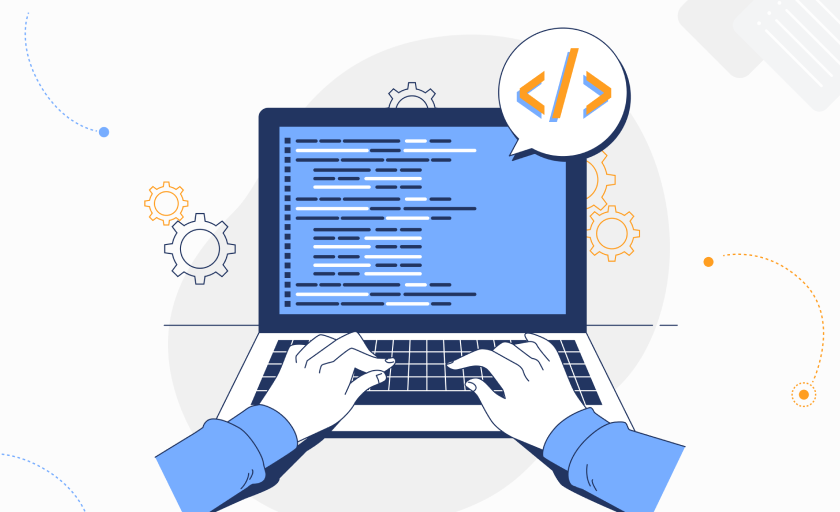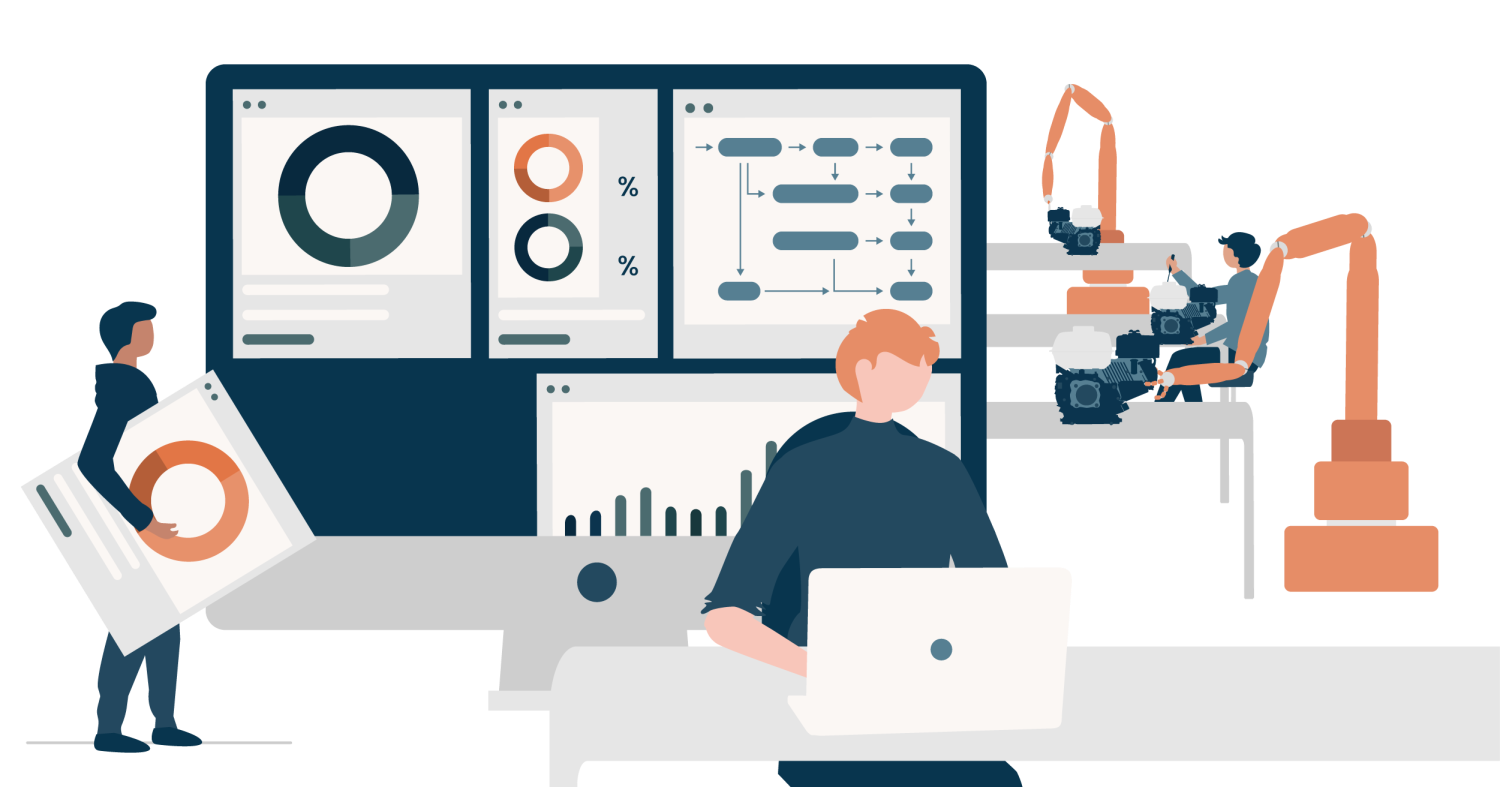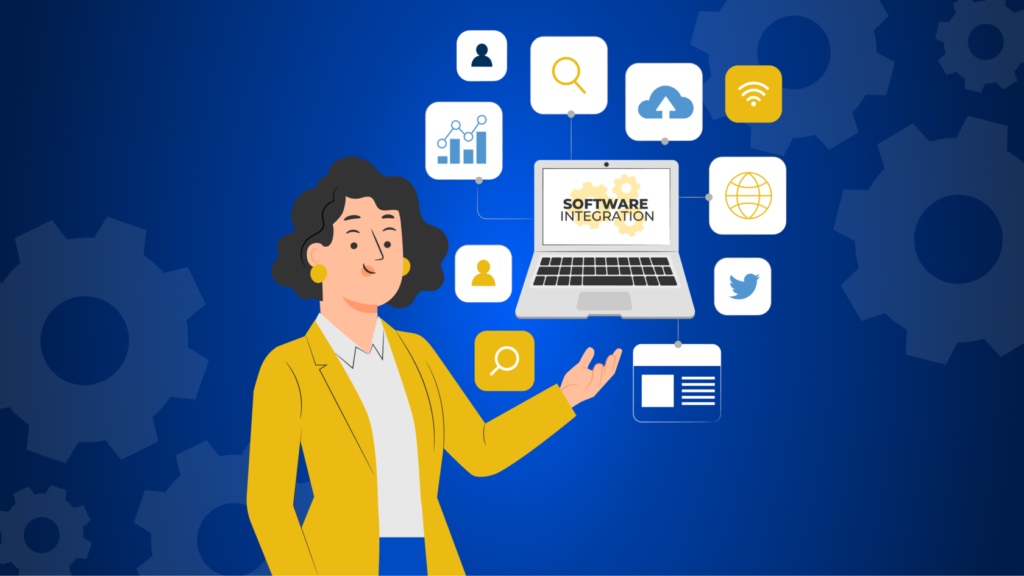If you’re an IT manager, business analyst, or decision-maker looking for tools to streamline complex operations, this article will be invaluable to you. Here, we provide a comprehensive breakdown of enterprise software, a cornerstone for modern business processes. Understanding this tool can unlock new efficiencies, reduce costs, and enhance productivity across your organization.
What is Enterprise Software?
Enterprise software is designed to meet the complex needs of large organizations, encompassing a range of functionalities from managing operations to supporting strategic initiatives. These systems are integrated across the organization’s various departments to ensure seamless operation.
Core Features of Enterprise Software
Enterprise software is characterized by several key features that set it apart from other types of business software:
- Integration Capabilities: Enterprise software connects disparate business processes and ensures the smooth flow of data across them. This integration is crucial for maintaining consistency and efficiency across the organization.
- Scalability: As your business grows, your software needs to keep up. Enterprise software is designed to grow with your business, capable of handling increased transaction volumes and data without sacrificing performance.
- Customizability: Every business is unique, and enterprise software recognizes this. It offers the ability to tailor functionalities to meet specific business needs, improving efficiency and productivity.
- Data Analytics: In the age of big data, making sense of vast amounts of information is crucial. Enterprise software offers advanced insights through analytics, aiding smarter business decisions.
- Security and Compliance: With cyber threats on the rise, enterprise software ensures the protection of sensitive data and adherence to industry regulations.
These features work together to create a robust system that can handle the complexities of modern business operations. Let’s dive deeper into how these features translate into tangible benefits for organizations.
Benefits of Implementing Enterprise Software
The implementation of enterprise software can bring about transformative changes in an organization. Here are some of the key benefits:
Operational Efficiency
One of the primary advantages of enterprise software is its ability to streamline operations. By automating routine tasks, it reduces redundancy and improves accuracy. This automation not only increases overall productivity but also allows employees to focus on more strategic activities that require human insight and creativity.
For instance, an ERP system can automate the process of order fulfillment, from receiving the order to shipping the product. This automation reduces the chances of human error and speeds up the entire process, leading to faster delivery times and increased customer satisfaction.
Enhanced Collaboration
Enterprise software breaks down departmental silos by offering a unified platform for accessing data. This fosters a collaborative work environment where teams can easily share information and work together on projects.
Take, for example, a product development process. With enterprise software, the design team can easily share their latest prototypes with the manufacturing team, who can then provide immediate feedback on feasibility. This real-time collaboration can significantly speed up the product development cycle.
Improved Customer Relationship Management
In today’s customer-centric business environment, understanding and meeting customer needs is crucial. Enterprise software, particularly CRM systems, provides real-time data insights that allow organizations to improve their customer service and tailor their marketing strategies.
For example, a CRM system can track customer interactions across various touchpoints – from social media to in-store visits. This comprehensive view allows businesses to provide personalized experiences, leading to enhanced customer satisfaction and retention.
Data-Driven Decision Making
Enterprise software provides powerful analytics tools that can process vast amounts of data and present insights in easy-to-understand formats. This capability enables managers to make data-driven decisions, reducing reliance on gut feelings or outdated information.
For instance, a retail company can use enterprise software to analyze sales data, customer preferences, and inventory levels to optimize their stock and pricing strategies. This data-driven approach can lead to increased sales and reduced waste.

Popular Types of Enterprise Software
There are various types of enterprise software, each designed to address specific business needs. Here are some of the most popular types:
Enterprise Resource Planning (ERP)
ERP systems are perhaps the most comprehensive type of enterprise software. They integrate and manage core business processes such as finance, HR, manufacturing, supply chain, services, procurement, and others. ERP provides a unified real-time view of core business processes, using common databases maintained by a database management system.
For example, SAP, one of the leading ERP providers, offers solutions that can manage everything from product planning, development, and manufacturing to marketing, sales, and distribution. Their SAP S/4HANA suite is designed to run simple in the digital economy.
Customer Relationship Management (CRM)
CRM software focuses on managing a company’s interactions with current and potential customers. It uses data analysis about customers’ history with a company to improve business relationships, specifically focusing on customer retention and driving sales growth.
Salesforce, a popular CRM solution, offers features like contact management, task management, and analytics. Their Sales Cloud product, for instance, helps sales teams close more deals faster and smarter.
Supply Chain Management (SCM)
SCM software helps in managing the flow of goods, data, and finances related to a product or service, from the procurement of raw materials to the delivery of the product at its final destination.
Oracle’s Supply Chain Management Cloud is an example of a comprehensive SCM solution. It offers features like demand management, supply planning, and logistics.
Human Resource Management Systems (HRMS)
HRMS, also known as Human Capital Management (HCM) systems, support managing employee data, payroll, recruitment processes, performance management, and compliance.
Workday is a leading provider in this space, offering a cloud-based system that combines human capital management, payroll, and financial management. Their HCM suite includes features for talent management, workforce planning, and payroll.
Business Intelligence (BI) Tools
BI tools focus on data analysis and visualization, helping businesses make data-driven decisions. They can process large amounts of data and present it in easy-to-understand formats like dashboards and reports.
Tableau, now part of Salesforce, is a popular BI tool known for its powerful data visualization capabilities. Their Tableau Desktop product allows users to create interactive data visualizations with drag-and-drop simplicity.
Key Considerations When Choosing Enterprise Software
Selecting the right enterprise software is a critical decision that can significantly impact your business operations. Here are some key factors to consider:
Business Needs Assessment
Before diving into the selection process, it’s crucial to identify your organization’s specific requirements and objectives. Ask yourself:
- What business processes do you need to improve?
- Does the software need to support global operations, or is it confined to a local scale?
- What are your growth projections, and can the software scale accordingly?
Conduct a thorough analysis of your current processes and identify pain points that the software should address. Involve key stakeholders from different departments to ensure all needs are considered.
Budget and Total Cost of Ownership
When evaluating enterprise software, it’s important to look beyond the initial purchase price. Consider the total cost of ownership (TCO), which includes:
- Implementation costs
- Training expenses
- Maintenance and support fees
- Potential hardware upgrades
- Customization costs
Remember, the cheapest option isn’t always the most cost-effective in the long run. A more expensive solution that better fits your needs might provide a better return on investment.
Vendor Reputation and Support
The relationship with your software vendor is likely to be a long-term one, so it’s crucial to choose wisely. Evaluate the following:
- The vendor’s reputation in the industry
- Their history of updates and improvements to the software
- The quality and availability of their support services
- The robustness of their user community
Look for reviews and case studies from businesses similar to yours. Don’t hesitate to ask for references and speak directly with current users of the software.
Integration Capabilities
In today’s interconnected business environment, your enterprise software shouldn’t operate in isolation. Consider how well it can integrate with:
- Your existing systems
- Third-party applications you use or plan to use
- Future technologies you might adopt
Look for software with open APIs and pre-built integrations with popular tools in your industry.
User Experience and Adoption
Even the most powerful software is useless if your employees struggle to use it. Consider the user interface and overall user experience. Is it intuitive? Does it align with how your employees work?
If possible, arrange for a trial or demo where your employees can test the software. Their feedback can be invaluable in making the right choice.

Challenges in Implementing Enterprise Software
While enterprise software can bring numerous benefits, its implementation is not without challenges. Being aware of these potential hurdles can help you prepare and mitigate risks:
Resistance to Change
One of the biggest challenges in implementing new enterprise software is often not technical, but human. Employees may be resistant to change, especially if they’re comfortable with existing systems.
To overcome this:
- Communicate clearly about why the change is necessary and how it will benefit both the company and individual employees
- Involve employees in the selection and implementation process to increase buy-in
- Provide comprehensive training and support during the transition
Remember, effective change management practices are crucial for successful implementation.
Data Migration
Migrating existing data to a new system can be complex and risky. There’s always the potential for data loss or corruption during the transfer process.
To mitigate these risks:
- Plan the data migration process carefully
- Perform a thorough data cleansing before migration
- Conduct multiple test runs before the final migration
- Always keep a secure backup of your original data
Customization Complexity
While customization is a key feature of enterprise software, it can introduce complexity and require additional time and resources. Over-customization can also make future updates and maintenance more difficult.
To balance customization needs:
- Clearly define which customizations are essential for your business processes
- Consider using the software’s built-in best practices where possible, rather than customizing to match your current processes
- Plan for how customizations will be maintained and updated over time
Integration Issues
Integrating new enterprise software with existing systems can be challenging, especially if you’re dealing with legacy systems or custom-built solutions.
To address integration challenges:
- Conduct a thorough audit of your current IT landscape
- Choose software with robust API capabilities
- Consider using middleware or integration platforms if necessary
- Plan for adequate testing of all integrations
Future Trends in Enterprise Software
As we look towards 2025 and beyond, several trends are shaping the future of enterprise software:
Artificial Intelligence and Machine Learning
AI and ML are becoming increasingly integrated into enterprise software, offering capabilities like:
- Predictive analytics for better decision making
- Automated customer service through chatbots
- Intelligent process automation
For example, Salesforce’s Einstein AI is already providing AI-powered insights across their CRM platform. We can expect these capabilities to become more sophisticated and widespread in the coming years.
Cloud-Native Architecture
While cloud-based enterprise software is already common, the trend is moving towards cloud-native architecture. This approach, which builds and runs applications to fully exploit the advantages of cloud computing, offers benefits like:
- Greater scalability and flexibility
- Improved resilience and disaster recovery
- Easier updates and maintenance
Microsoft’s Azure cloud platform, for instance, is heavily investing in cloud-native technologies and services.
Internet of Things (IoT) Integration
As IoT devices become more prevalent in business environments, enterprise software will need to be able to collect, process, and analyze data from these devices in real-time. This will enable:
- More accurate tracking of physical assets
- Predictive maintenance in manufacturing
- Enhanced supply chain visibility
SAP’s Leonardo platform is an example of how enterprise software providers are integrating IoT capabilities into their offerings.
Enhanced User Experience
User experience will continue to be a focus, with enterprise software becoming more intuitive and user-friendly. We can expect to see:
- More personalized user interfaces
- Increased use of natural language processing for easier interaction
- Better mobile experiences for employees on the go
Workday, for example, has been praised for its user-friendly interface and is likely to continue innovating in this area.
As these trends evolve, enterprise software will become even more powerful and integral to business operations. Organizations that stay abreast of these developments and adapt accordingly will be well-positioned to leverage enterprise software for competitive advantage.
Conclusion
Selecting and implementing the right enterprise software can transform your business operations, delivering efficiencies that drive success. This ultimate guide aims to provide you with the insights necessary to make informed decisions about integrating enterprise software into your organizational strategy.
As you move forward, keep in mind the importance of aligning software choices with your company goals, employee needs, and customer expectations. Remember that successful implementation goes beyond just choosing the right software – it requires careful planning, effective change management, and ongoing optimization.
For professionals ready to embrace this transformative tool, the journey begins with thorough research and a strategic implementation plan. By leveraging enterprise software effectively, businesses can not just meet today’s operational demands but also set the stage for future growth and innovation.
As we look towards 2025 and beyond, the role of enterprise software in driving business success will only grow. By staying informed about emerging trends and continuously evaluating and updating your enterprise software strategy, you can ensure that your organization remains competitive in an increasingly digital business landscape.
Remember, the goal of enterprise software is not just to automate processes, but to transform how your business operates. When implemented thoughtfully and strategically, enterprise software can be a powerful catalyst for business growth and innovation.
